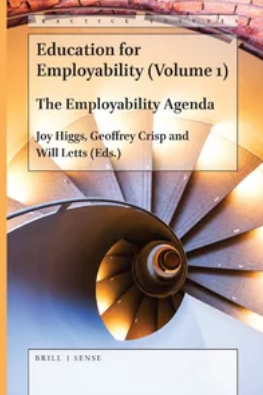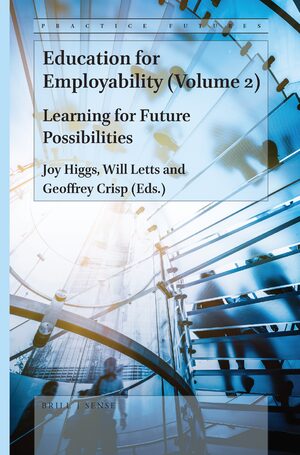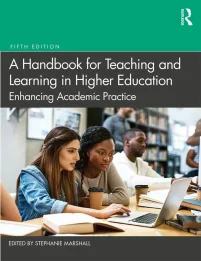Geoff completed his BSc (Honours, First Class) at the University of Queensland in 1977 and his PhD in Chemistry at the Research School of Chemistry, Australian National University in 1981. After a Humboldt Fellowship completed at the Max Planck Institute in Mulheim an der Ruhr and postdoctoral positions at Colorado State University and the Australian National University, Geoff began his first academic appointment in 1985 in the Chemistry Department at the University of Melbourne. In 1988 he moved to the Chemistry Department at the University of Adelaide and continued discipline research and teaching until 2001. Geoff developed his passion for learning and teaching as well as continuing his work in chemistry during this time, being Associate Dean for Learning and Teaching for the Faculty of Science from 1999-2001. He was actively involved in the development of online learning and was appointed the Director of the Online Learning and Teaching Unit in 2001 to oversee the implementation of the university online system (MyUni). Geoff made the permanent move to educational and staff development and online learning when he was appointed the Director of the Centre for Learning and Professional Development at the University of Adelaide in 2002. Geoff was Dean Learning and Teaching at RMIT University in Melbourne from 2011 to 2015 and PVC Education at University of New South Wales from 2016 to 2018. Geoff received the University of Adelaide’s Stephen Cole the Elder Prize (Excellence in Teaching) in 1999; the Royal Australian Chemical Institute Stranks Medal for Chemical Education in 2003 and Australian Learning and Teaching Council Fellowships in 2006 and 2009. Geoff has received a HERDSA and ASCILITE Fellowship for his work. Geoff is a Principal Fellow of the Higher Education Academy. Geoff was the Deputy Vice Chancellor Academic at the University of Canberra, Australia for the period 2019-2023. Geoff is now a Higher Education Consultant.
Copy of Curriculum Vitae available on request. Please use the “Contact Me” or “Send a Message” to request a copy.

Assessing learning in an online environment is being used by teachers and institutions at an increasing rate. Learners are demanding a more flexible approach to assessment activities just as they have done with learning. This demand will increase as online practice becomes embedded into all schools, further and higher educational courses and corporate training programs. As students are engaging with content in an online environment, they will also need to be assessed using the same tools that are used for the learning experience. This book provides practical guidance to various aspects of online assessment including: types of assessment; choosing the right software; examples of e-assessment over a wide-variety of disciplines; making e-assessment interactive.

This HERDSA Guide highlights some of the key issues surrounding the use of e-assessment and provides examples and practical advice on how teachers might engage students in more interactive online tasks. It presents a realistic view of what is now possible through the use of computers and the Internet in higher education assessment. It specifically discusses the important relationship between learning, teaching and assessment, and presents a number of frameworks for aligning e-learning activities and e-assessment tasks.
The Guide covers e-assessment possibilities ranging from simple computer marked multiple-choice questions, through to elaborate role-plays, interactive simulations and online scenarios. There is no suggestion in the Guide that e-assessment will replace all traditional assessment tasks; it highlights the necessity for teachers to be aware of the new opportunities for enhancing the quality of assessment tasks through the use of computers and the Internet. The Guide also emphasizes that if students are using the Internet or computers as part of the learning environment, they should also use these tools to complete their assessment tasks. Numerous examples of how teachers can prepare engaging questions that will test higher order capabilities in students are provided in the Guide.

Universities are expected to produce employable graduates. In Education for Employability, experts explore critical questions in the employability agenda: Who sets the standards and expectations of employability? How do students monitor their own employability? How can universities design whole curricula and university environments that promote employability? What teaching and learning strategies facilitate the development of employability?
Responsibility for developing and sustaining employability lies with a broad coalition of the individual students, the university, alumni, the professions and industry and is accomplished through the intended curriculum as well as co-curricular, extra-curricular and supra-curricular activities, events and learning opportunities.

We often look back at changing trends in higher education and call them “bandwagons” (temporary fads that everyone rushes to be part of and “jump on”). While much of the hype and jargon of “The Employability Agenda” may fade from the tip of our tongues (or perhaps be subsumed into the norm) in the mid future, there are two fundamental changes that will not: the digital revolution embedded in changing work and economic practices and the “re-globalisation” of the world that this and other politico-economic changes have brought about. These will continue to be part of how we live and work, so tertiary education will need to take its part in supporting employ-ability far beyond either the timing or scope of preparation for initial employment.
Employability is important to local, national and international labour market contexts, parameters and policies. As well as impacting workforces, employability is an essential characteristic of workers. It is very important that employability is understood and enacted as personal employability not just employment of individuals. We have found that employability is defined as much, if not more, by mindset rather than skillset. Part of this mindset involves recognising the unknowns of future work and an even bigger part is recognising our responsibilities as workers and educators lies in shaping our own employability and that of the novice learners and workers in our spaces of influence and communities of practice.
In Education for Employability (Volume 2): Learning for Future Possibilities we continue on from the big agenda discussions of Education for Employability (Volume 1): The Employability Agenda to explore education for employability in a variety of spaces: in the context of higher education as an entrance into the workforce, in joining communities of practice and in the lifelong pursuit of employability – preparing people for a portfolio of careers rather than a job-for-life.

Focused on developing professional academic skills for supporting and supervising student learning and effective teaching, the fifth edition of A Handbook for Teaching and Learning in Higher Education recognises the complex demands of teaching, research, scholarship and academic management in higher education institutions.